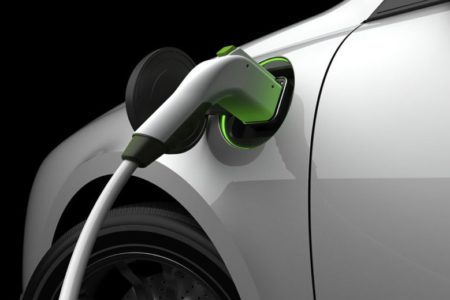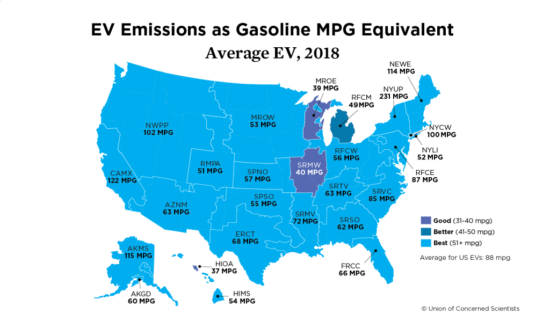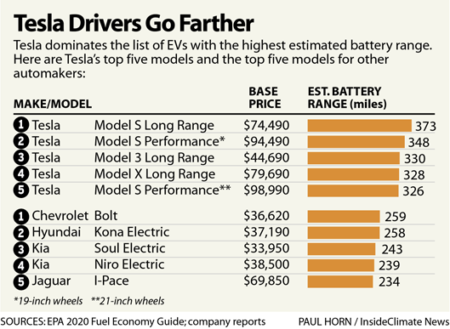
February 23, 2020 – Detractors of the electric vehicle (EV) argue that after you take into consideration vehicle range, the lack of charging infrastructure, vehicle cost, and the emissions produced by the power plants producing the electricity that goes into them, they are not any better than the internal combustion engine (ICE) vehicles being built today. With the high emission standards and improvement on mileage, ICE-supporting pundits happily point out the many disadvantages of EVs, particularly range anxiety and price. But the latest reports based on a compilation of data from U.S. electric power plant emissions, and EVs tells a very different story. It notes that driving an average EV would be equal in rating to an ICE vehicle that makes 37.41 kilometers per liter (88 miles per gallon). I compared this to my hybrid 2016 Toyota RAV4 which I use largely for city driving and get between 14 to 17 kilometers per liter (32 to 39 miles per gallon).
Today’s most efficient ICE vehicles produce 24.6 kilometers per liter (58 miles per gallon). But the average new ICE vehicle coming from world assembly lines produces 13 kilometers per liter (31 miles per gallon) for cars and 8.9 kilometers per liter (21 miles per gallon) for light trucks. That’s a significant improvement in the last decade but still far less than the 10% improvement in EVs in terms of their overall performance and, as a result, contribution to greenhouse gas (GHG) emissions.

The improved overall efficiency of EVs comes largely from the rollout and adoption of Tesla’s Model 3 which currently makes up 20% of all EV sales in North America. And the other significant contributor to the lessening of emissions associated with the powering of EVs is the shuttering of coal-fired thermal plants as primary electricity producers, going from 45% to 28% in less than a decade in the U.S. with an offsetting increase in solar and wind electricity from 2% to 8% of total American energy capacity.
Ongoing range improvements include last week’s announcement by Tesla, which noted that its Model S, through software and hardware improvements, can now top 627 kilometers (390 miles), and will soon pass the 644 kilometers (400 miles) mark.
For the average vehicle buyer, a Model S may be beyond his or her’s means. But EVs with lower-range capacity generally (Jaguar an exception) are priced far less as you can see by the chart below that shows 2020 range economy standards for the top-selling models in North America.
Are EVs keeping up with a growing trend away from sub-compact and sedans to SUVs and light trucks? It appears that is the case with Audi, Toyota, Hyundai, Hummer, Tesla, and newcomer Rivian showing off adapted existing models or announcing forthcoming entirely new vehicles in these two popular categories.
There is no doubt that the 2020s will be the decade of the EV as North American and other global vehicle manufacturers pivot to meet the challenges of GHG emissions and climate change. But getting people out of ICE vehicles and into EVs will require three changes:
- The cost of EVs will have to continue to drop while commensurately the range will have to continue to go up.
- The charging infrastructure will have to become as ubiquitous as the existing fueling station network is today.
- Governments will need to continue developing and implementing policies to get people out of fossil-fuel-powered vehicles and into EVs. That may even include sunset dates for ICE-powered vehicles in urban centers (rural areas with less infrastructure may be given a longer period in which to make the transition).









